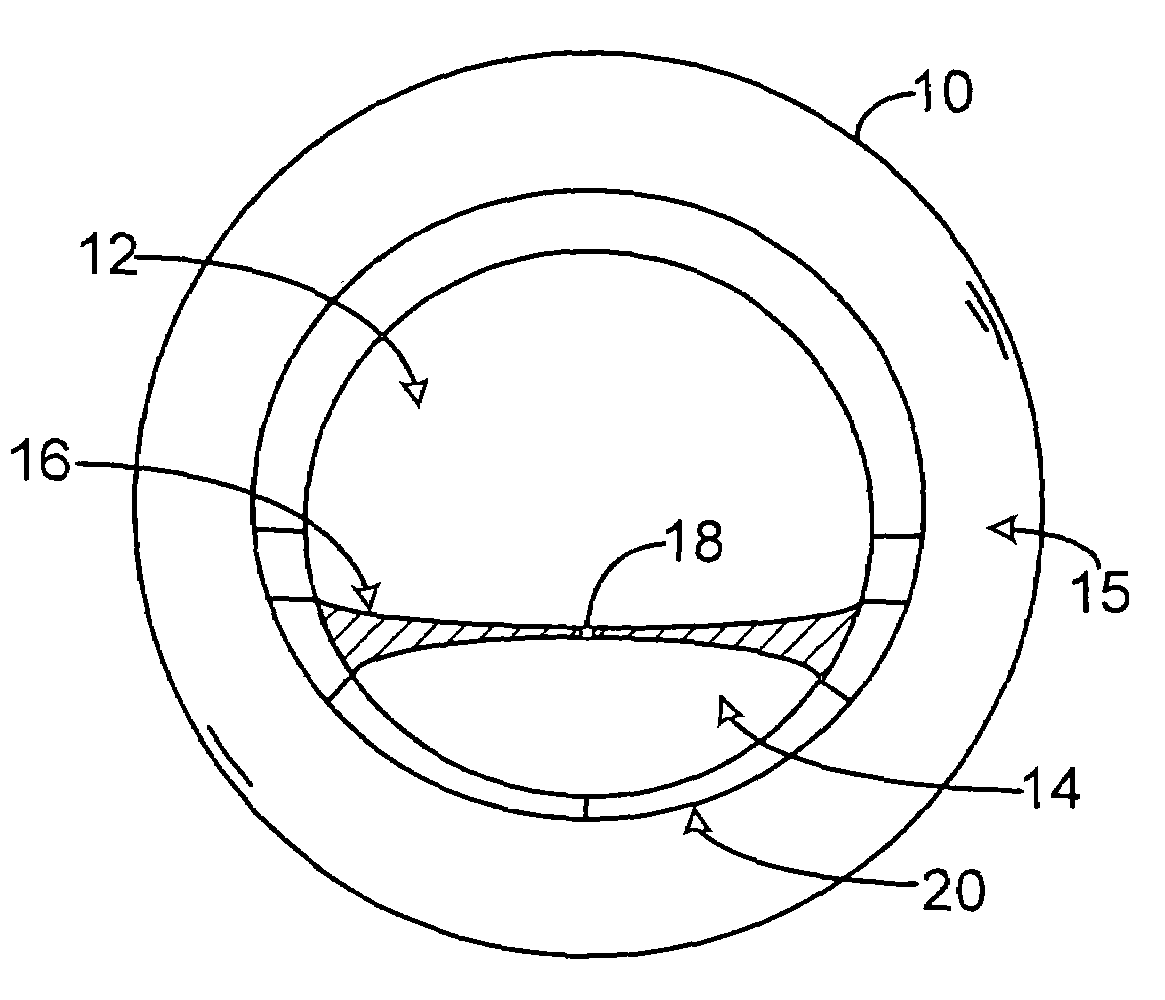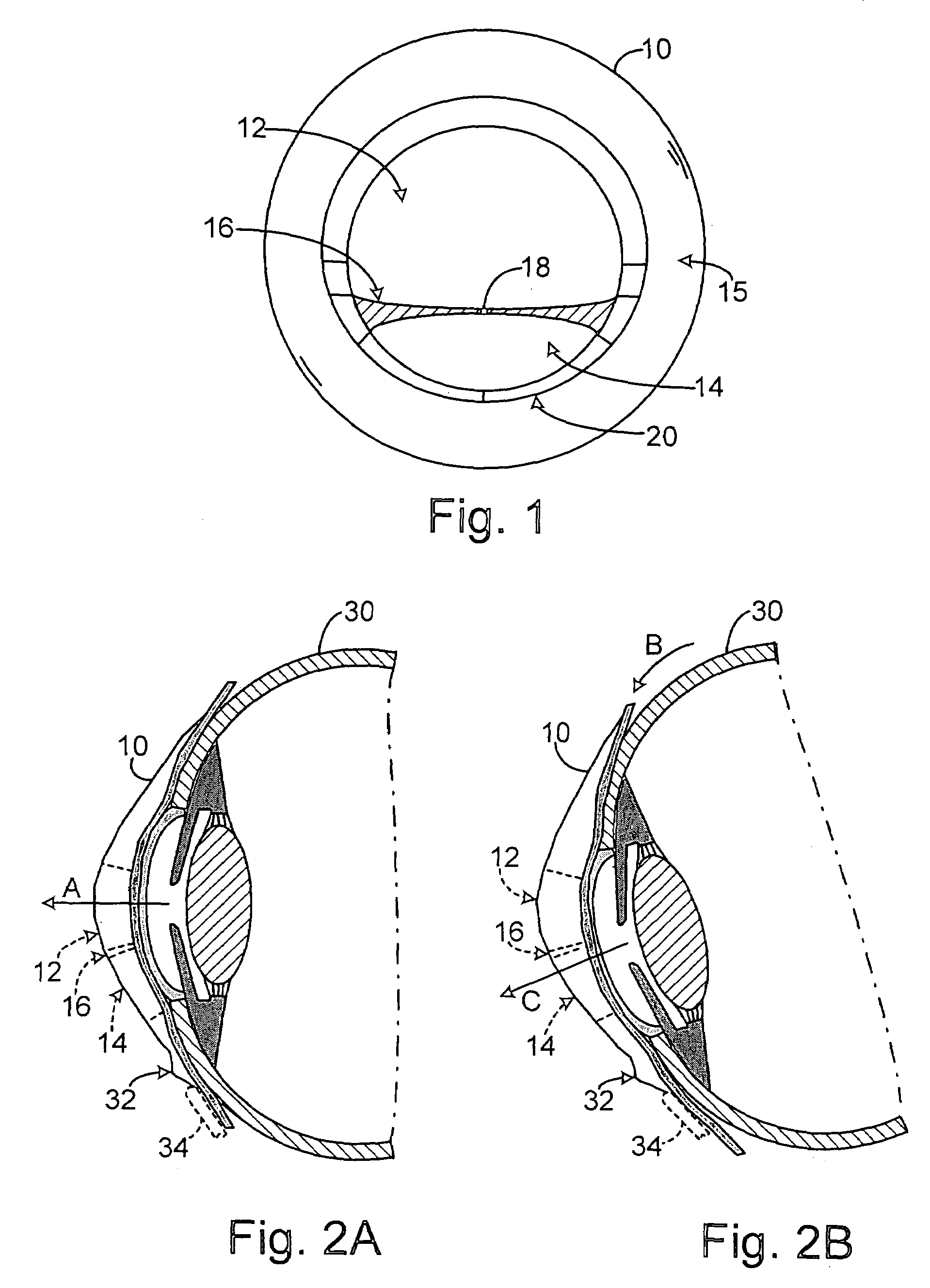Ophthalmic lens having an optical zone blend design
a technology of optical zone and blend design, applied in the field of ophthalmic lenses, can solve problems such as ghost images to the wearer, and achieve the effect of reducing the appearance of ghost images or image blur
- Summary
- Abstract
- Description
- Claims
- Application Information
AI Technical Summary
Benefits of technology
Problems solved by technology
Method used
Image
Examples
Embodiment Construction
[0016]With reference to the figures in which like numerals represent like elements throughout, FIG. 1 illustrates a bifocal contact lens 10 worn on the anterior surface of the cornea, of the eye 30 (FIGS. 2A and 2B), according to a preferred embodiment. In accordance with this preferred embodiment of the invention, the bifocal contact lens 10 has an anterior surface (or front curve) and an opposite posterior surface (or base curve) which is rest on the cornea of the eye when worn by a user. The anterior surface includes a vertical meridian, a horizontal meridian, a central optical zone, a peripheral blending zone 20 extending outwardly from the central optical zone, and a peripheral (e.g., lenticular zone) 15 surrounding the blending zone.
[0017]“A lenticular” refers to a peripheral non-optical surface zone on the anterior surface of a contact lens between the optical zone and the edge. The primary function of the lenticular is to control the thickness of the lens edge and / or lens po...
PUM
 Login to View More
Login to View More Abstract
Description
Claims
Application Information
 Login to View More
Login to View More - R&D
- Intellectual Property
- Life Sciences
- Materials
- Tech Scout
- Unparalleled Data Quality
- Higher Quality Content
- 60% Fewer Hallucinations
Browse by: Latest US Patents, China's latest patents, Technical Efficacy Thesaurus, Application Domain, Technology Topic, Popular Technical Reports.
© 2025 PatSnap. All rights reserved.Legal|Privacy policy|Modern Slavery Act Transparency Statement|Sitemap|About US| Contact US: help@patsnap.com



